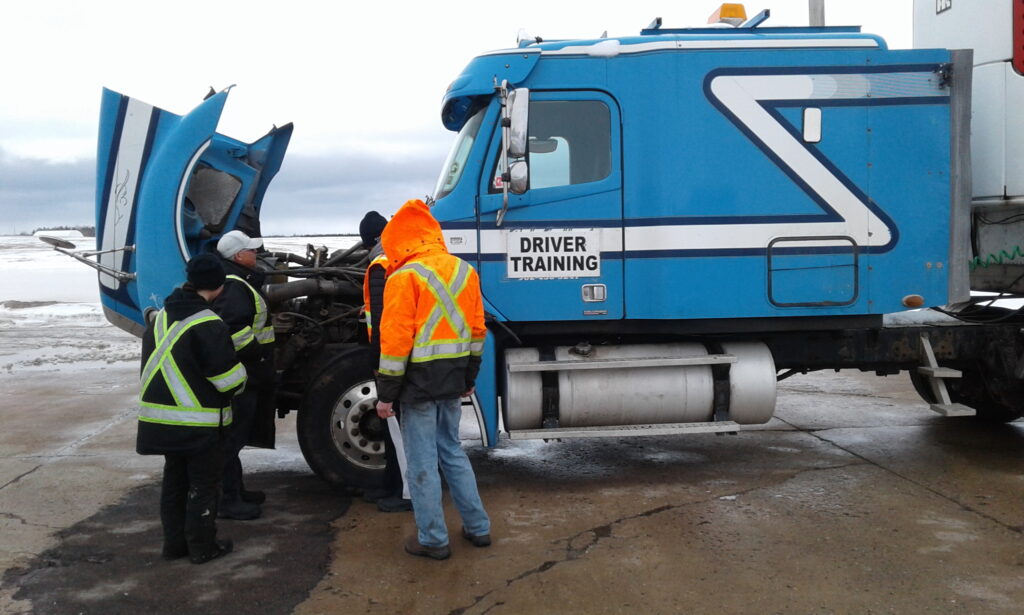P.E.I. to make MELT mandatory from Aug. 5
Prince Edward Island will introduce mandatory entry-level training (MELT) for new Class 1 commercial driver’s licence applicants from Aug. 5.
Passing MELT will become a prerequisite for Class 1 PEI driver’s licence testing, according to a news release. P.E.I.’s program will include in-depth training to safely navigate large commercial trucks in various weather and road conditions while on and off the island.
Provincially licensed commercial driver training schools will deliver MELT. The provincial government may cover 70% of training fees for eligible participants to help remove potential barriers to employment and support participant training.

ASTA and JVI commercial driving schools are licensed to deliver MELT in the province. The driving schools set their own fees.
P.E.I. joins eight other provinces and territories with MELT and aligns with Class 1 entry-level training standards in other Canadian jurisdictions. Among Atlantic provinces, Newfoundland and Labrador and New Brunswick made MELT mandatory earlier this year.
Engagement with trucking and driving sectors started in 2021 and provided input into P.E.I.’s program. In February 2020, the National Safety Code introduced mandatory training standards for Class 1 driver training. P.E.I.’s training program will exceed the National Safety Code’s standards for Class 1 entry-level training.
A P.E.I. Class 1 license allows Islanders to legally operate a semi-truck (truck-tractor and trailer with fifth wheel and air brakes) as well as Class 3, 5, 8 and 9 vehicles.
240 hours of training
Starting Aug. 5, drivers applying for their Class 1 driver license for the first time must take MELT. People holding a valid Class 1 licence or those who have called Access P.E.I. by Aug. 2 to schedule a Class 1 road test, are exempt from MELT.
Applicants for a Class 1 licence need to contact Access P.E.I. before they can enroll for training.
While the national training standard is 112 hours, P.E.I.’s MELT program is set at 240 hours of training. It includes in-classroom learning, in-yard practical learning, in-cab/behind the wheel and highway driving and air brake training.
Participants will also learn about the issue of human trafficking, how to detect people at risk, and how to report these incidents.
Have your say
This is a moderated forum. Comments will no longer be published unless they are accompanied by a first and last name and a verifiable email address. (Today's Trucking will not publish or share the email address.) Profane language and content deemed to be libelous, racist, or threatening in nature will not be published under any circumstances.
-
I disagree spending time in a passenger seat does nothing. I agree that it needs to be the current melt standard plus another 3 months with a experienced driver of those at leat 240 hours the other driver sit in the passenger seat or on a driver simulation machine
I think we should take people straight out of high-school and have them spend 500 hours of training plus 2000 hrs fixing under a shop like setting repairing trucks and trailer or spend 8 months in a class D Z and 4 months in a shop like setting and then upgrading to pull a B train and unit with manual transmission. We need to test all truck drivers that haul and drive for farmers as well. We also need to push young people to look at becoming mechanics and other skilled trade people in my opinion.
Not enough! To get a license to swing a hammer or plumbing is around 7500 hours of on the job. So operating a large vehicle should probably require a little more than 240 hours. New drivers should spend a year in someone’s passenger seat with a driver with real experience teaching how to operate a truck properly in all possible situations. It should b a skilled trade like carpentry or plumbing ect.